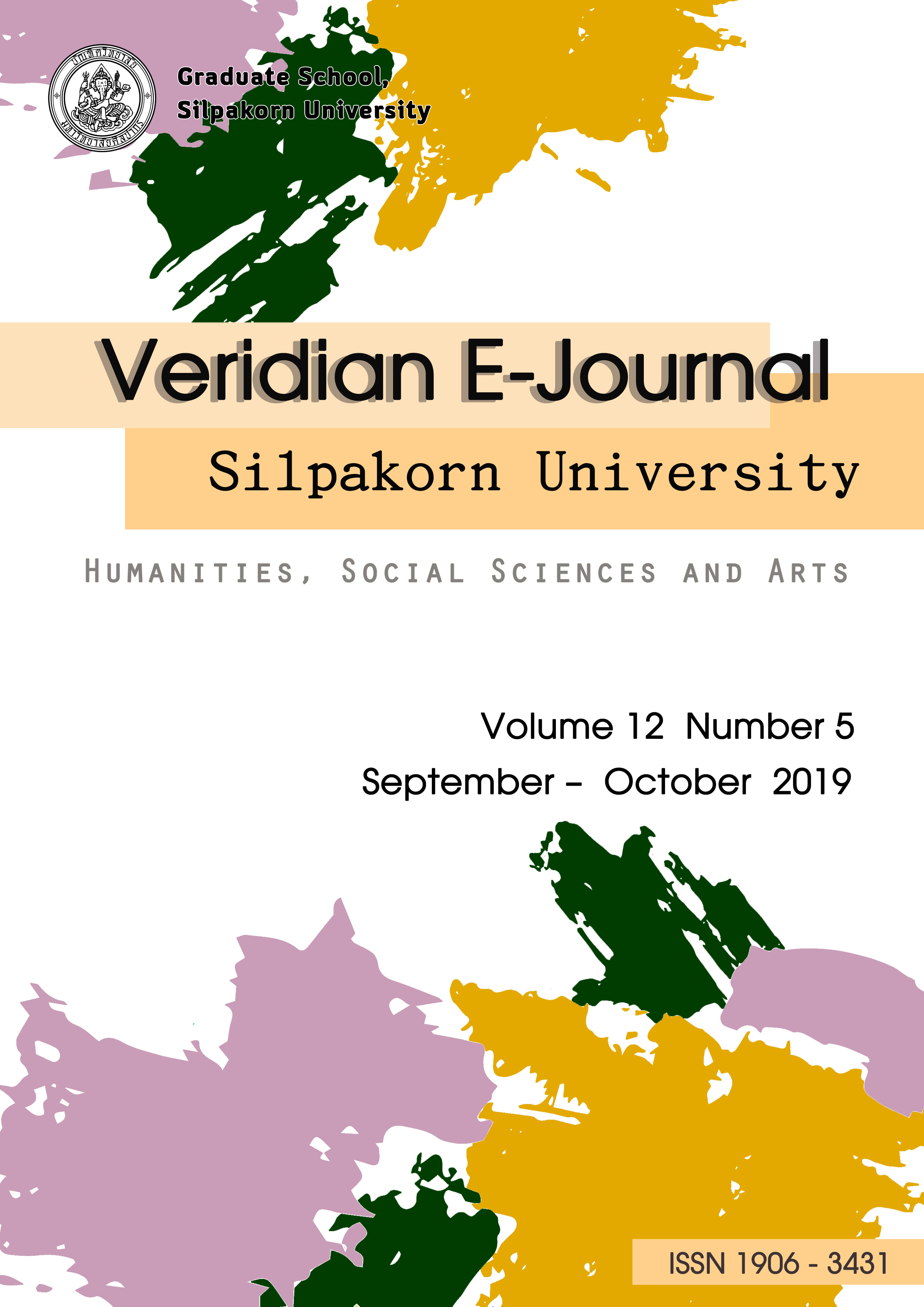การพัฒนาความคล่องแคล่วว่องไวด้วยการฝึกพลัยโอเมตริก (Agility Development by Plyometric Training)
Main Article Content
Abstract
ความคล่องแคล่วว่องไว เป็นความสามารถในการเปลี่ยนทิศทางของร่างกายอย่างรวดเร็วและ มีประสิทธิภาพแต่สามารถควบคุมได้ในขณะเคลื่อนไหวด้วยการใช้แรงเต็มที่มากที่สุดเท่าที่จะมากได้ และร่างกายสามารถเปลี่ยนอิริยาบถได้อย่างรวดเร็วโดยไม่มีความผิดพลาดเกิดขึ้น ความคล่องแคล่วว่องไวนี้จะต้องอาศัยการควบคุมและการประสานงานของระบบประสาทและกล้ามเนื้อเป็นอย่างดี จึงทำให้เกิดความรวดเร็วและแม่นยำขึ้นได้ นอกจากนั้นยังต้องอาศัยความแข็งแรงของกล้ามเนื้อ ความอ่อนตัวของข้อต่อ และทักษะในการเคลื่อนไหวเข้ามาประกอบด้วย เพราะฉะนั้นนักกีฬาจะมีความคล่องแคล่วว่องไวได้จะต้องฝึกฝนตนเองเสมอและเป็นองค์ประกอบหลักของสมรรถภาพทางกายที่ส่งผลต่อการทำกิจกรรมต่าง ๆ ในชีวิตประจำวัน รวมทั้งการเล่นกีฬาประเภทต่าง ๆ ทำให้สามารถเคลื่อนไหวได้อย่างรวดเร็วและมีประสิทธิภาพ ความคล่องแคล่วว่องไว มีอยู่ด้วยกัน 5 ประเภท คือ ความคล่องแคล่วว่องไวทั่วไป ความคล่องแคล่วว่องไวแบบชั่วขณะ ความคล่องแคล่วว่องไวแบบระยะสั้น ความคล่องแคล่วว่องไวแบบภาพรวม และ ความคล่องแคล่วว่องไวแบบเฉพาะเจาะจง โดยมีปัจจัยที่ส่งผลกระทบทั้งหมด 2 ด้าน คือ ปัจจัยทั่วไป ได้แก่ ระยะเวลา อายุ เพศ รูปร่าง น้ำหนักตัวและความเมื่อยล้า ส่วนปัจจัยด้านสมรรถภาพทางกาย ประกอบด้วยองค์ประกอบ 5 ส่วน คือ ความแข็งแรงและความแข็งแรงสูงสุด ความเร็ว พลังกล้ามเนื้อ ความอ่อนตัว และการทำงานประสานกันของระบบประสาทและกล้ามเนื้อ โดยต้องพิจารณาจากหลักการฝึก การพัฒนาความคล่องแคล่วว่องไว มีอยู่ด้วยกันหลายรูปแบบที่ส่งผลดี เช่น การฝึกความแข็งแรงทั่วไป การฝึกแบบผสมผสาน และการฝึกด้วยพลัยโอเมตริก ปัจจุบันการฝึกด้วยโปรแกรมพลัยโอเมตริกเป็นที่นิยมอย่างมาก เน้นการฝึกเพื่อการกระตุ้นระบบประสาทของกล้ามเนื้อ มัดใยกล้ามเนื้อ ระบบประสาทที่เอ็นกล้ามเนื้อให้ทำงานร่วมกันอย่างดีในการตอบสนองต่อการเคลื่อนไหว แต่ในขณะเดียวกันก่อนที่จะออกแบบโปรแกรมการฝึกและกำหนดการฝึกนั้น มีข้อควรพิจารณา เช่น อายุ เพศ สถานที่ที่ใช้ในการฝึก พื้นฐานความแข็งแรงของกล้ามเนื้อและความเร็ว สำหรับข้อพิจารณาส่วนของโปรแกรมฝึกพลัยโอเมตริก ควรพิจารณาถึง การอบอุ่นร่างกาย ชนิดของกีฬา ช่วงเวลาของการฝึก ระยะเวลาของโปรแกรมการฝึก ความถี่ของการฝึก ระดับความหนัก ลำดับขั้นของปริมาณการฝึก เวลาพัก ความเมื่อยล้า หลักการออกแบบโปรแกรม การพิจารณาข้อดีและข้อเสียจากการฝึกความคล่องแคล่วว่องไวด้วยพลัยโอเมตริก ซึ่งหากนักพลศึกษา นักวิทยาศาสตร์การกีฬาและผู้ฝึกสอนสามารถปฏิบัติได้อย่างถูกต้องและเหมาะสมก็จะสามารถพัฒนาความคล่องแคล่วว่องไวให้เกิดประโยชน์สูงสุดต่อวงการกีฬาต่อไป
The agility is an ability to change the body directions quickly and efficiently which can be controlled during the movement with the maximum force as much as possible. The body can change the movements rapidly without any mistakes. This agility requires control and coordination of the nervous system and muscles well to make it faster and more accurate. Moreover, agility also requires muscle strength, joint flexibility and motor skills. Therefore, the body needs regularly training to improve the agility and this is the main component in physical fitness that has effects on daily activities including the rapid and efficiency in various types of sports. There are five types of agility: General Agility, Temporal Agility, Spatial Agility, Universal Agility and Specific Agility. There are two factors that affect the agility; one is general factor that includes age, gender, body shape and fatigue, and the other factor is physical fitness that consists of five components: muscle strength and maximum strength, speed, muscle power, flexibility and coordination of the nervous system and muscles based on training principles. There are a number of good practices to develop the agility such as strength training, complex training and plyometric training. At present, plyometric practice is very popular. This focuses on training to stimulate the nervous system of the muscles, muscle fibers, the nervous system around tendons to work well in order to response to movements. At the same time, before designing a training program and a training schedule, there are general considerations such as age, gender, training location, basic muscle strength and speed. The plyometric program should be considered warm up, types of sports, training period, duration of the whole training program, frequency of practice, intensity, level of training quantity, amount of time to rest, fatigue, design principles and the advantages and disadvantages of agility practicing with the plyometric. All physical educator, sports scientists and trainers will be able to develop their agility for their sporting fields most provided that they can perform the plyometric training precisely and suitably.
